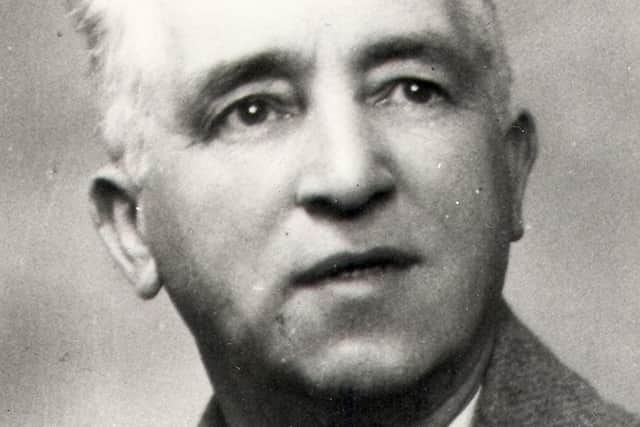Remembering the lost music of Havergal Brian, a composer celebrated at the BBC Proms
and live on Freeview channel 276
That Brian should continue to suffer obscurity is a shame. He was one of the most prolific composers of all time, his oeuvre including 32 symphonies and five operas. That is not to mention his songs, concertos and chamber music.
What do we know about his life and work and why has he been largely forgotten? William Brian (the ‘Havergal’ was an adult affectation) was born on January 29, 1876, in Dresden, Staffordshire. His working-class roots made him a rarity among classical musical composers.
Advertisement
Hide AdAdvertisement
Hide AdBrian took to music early in life. As a child he performed as a choirboy and learned to play many instruments, including the cello, organ and violin. Essentially self-taught, he wrote his first musical composition at the age of only 12.


The aspiring composer gained influential friends and admirers including Edward Elgar. But much of his career was characterised by obscurity and hardship.
Some of his troubles he brought on himself. Brian had no head for business. He could also be difficult. Photographs of him as a young man show a dapper-dressed gentleman with a magnificent waxed moustache. But his appearance was deceiving. An argumentative loner, it was said of him: “He does not sparkle; he does not even shine.”
At the outset of his career, Brian tasted the promise of fame and, if not fortune, at least a steady income. In 1898 he married Isabel Priestley, with whom he had five children. Sustaining such a large household was a struggle but in 1907 a wealthy businessman offered Brian a £500 annual income to concentrate on his composition.
Advertisement
Hide AdAdvertisement
Hide AdThat same year he achieved public success with the performance of his English Suite at the London Proms. The work did not find universal favour but drew praise from many critics for its melodicism and touches of humour.
Then it all went wrong. Brian argued with his benefactor. His marriage also broke down after an affair. Brian eventually married his mistress and had another five children with her. These children became aware of their half siblings only after their father had died. In the meantime, Brian was in trouble. His debts piled up, the public recital of his work stopped and he became a heavy drinking and violent husband.
Brian led an itinerant life for many years. Among his many addresses were Lewes and the Brighton suburb of Moulsecoomb. Here he took musical inspiration from long walks over the South Downs.
“I used to stand amazed at the long, endless, deep furrows in his ploughed field," Brian recalled of a local farmer with whom he struck up a friendship, “all glistening in the sun in various shades of purple in the autumn or early spring when the earth is still asleep.” That image informed his most famous composition, Symphony No.1 in D Minor, more familiarly known as The Gothic, which he completed after eight years in 1927. The ambition of this work, which includes parts for 200 musicians and a chorus of 400, is also one of the reasons why it has been so rarely performed.
Advertisement
Hide AdAdvertisement
Hide AdBrian worked obsessively on his music during these years despite his public obscurity. It was only when he moved to London to become assistant editor of the magazine Musical Opinion in the late 1920s that his family benefited from a regular income.
Brian retired from the magazine in 1940. He continued to live in London until 1958, when he relocated to a bungalow on Shoreham Beach. Far from idly living out his last years, his musical output increased at an astonishing rate, the composer penning more than 20 new works.
After decades struggling to get his compositions published or performed, it was only as the late autumn of his life turned to early winter that Brian experienced something of a renaissance. In 1961, The Gothic received its public premiere at the Westminster Central Hall. Five years later, Adrian Boult conducted a broadcast performance of the symphony at the Royal Albert Hall.
In January 1968 Brian moved into a flat at Atlantic Court in Shoreham. He continued to compose until overcome by infirmity near the end of his life. He died on November 28, 1972, knowing he had established an enduring reputation. That year saw the first commercial recording of one of his compositions as well as a television documentary about his life.
Advertisement
Hide AdAdvertisement
Hide AdBrian had little concern about he would be remembered. He was cremated in Worthing without any service. For all that he was and remains a relatively obscure figure, he has retained a cult following.
Many of his works have been recorded posthumously. The 50th anniversary of Brian’s death was also marked at the BBC Proms last August with a performance by the duo Alina Ibragimova and Cédric Tiberghien of his lyrical Legend for Piano and Violin.
It would be fitting though if the place that he called home for the last 14 years of his life also found a way to rediscover him, assuming most local people realise he has been lost. The campaign for a blue plaque in his honour begins here.